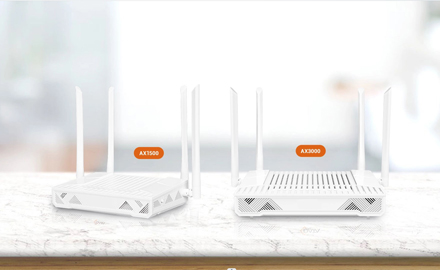An Optical Network Unit (ONU) is a crucial component in Passive Optical Networks (PONs), playing a pivotal role in the last mile connectivity between service providers and end-users. ONUs are employed in Fiber-to-the-Home (FTTH) and Fiber-to-the-Business (FTTB) networks, offering high-speed broadband access and various services. In this comprehensive exploration, we will delve into the myriad functions of an ONU, elucidating its significance in modern telecommunications.

1. Optical Signal Reception:
At its core, the ONU is responsible for receiving optical signals transmitted over the fiber-optic network. These signals typically originate from an Optical Line Terminal (OLT) located at the service provider's central office. The ONU functions as the endpoint device on the user's premises, converting the optical signals into electrical signals for further processing.
2. Media Conversion:
A primary function of the ONU is to perform media conversion, transforming optical signals into electrical signals suitable for transmission over copper or wireless mediums within the user's premises. This conversion facilitates seamless integration with various customer premises equipment (CPE), such as routers, switches, and end-user devices.
3. Data Demodulation:
ONUs are equipped with the capability to demodulate the incoming optical signals, extracting the transmitted data. This demodulation process is vital for retrieving the original information carried by the optical signals, enabling the ONU to interpret and further process the data.
4. Protocol Handling:
ONUs support various communication protocols, including Ethernet and Internet Protocol (IP). They play a crucial role in encapsulating and decapsulating data packets, ensuring compatibility with different networking standards. This versatility allows ONUs to seamlessly integrate with diverse networking environments.
5. Traffic Management:
ONUs implement traffic management mechanisms to prioritize and control the flow of data. Quality of Service (QoS) features ensures that critical applications receive higher priority, guaranteeing a consistent and reliable user experience. Traffic shaping and policing functionalities are often integrated into ONUs to optimize network performance.
6. Authentication and Security:
To ensure the integrity and security of the network, ONUs implement authentication mechanisms. They verify the identity of both the service provider's network and the end-user's equipment, preventing unauthorized access. Encryption techniques may also be employed to secure the data transmitted between the ONU and the central office.
7. Service Differentiation:
ONUs support the delivery of various services, including broadband internet, voice over IP (VoIP), and IPTV. By distinguishing between different types of services, ONUs enable service providers to offer bundled packages and ensure the efficient allocation of network resources for each service.
8. Remote Management and Monitoring:
ONUs are designed to be remotely managed and monitored by the service provider. This capability facilitates tasks such as firmware updates, troubleshooting, and performance monitoring without the need for physical intervention at the user's premises. Remote management enhances the overall efficiency of network operations.
9. Power Management:
ONUs are often equipped with power-saving features to optimize energy consumption. By intelligently managing power usage based on network demand and user activity, ONUs contribute to energy efficiency and sustainability in telecommunications networks.
10. Fault Detection and Reporting:
In the event of network issues or faults, ONUs play a crucial role in detecting and reporting problems to the central office. This functionality aids in rapid diagnosis and resolution of network issues, minimizing downtime and ensuring a reliable user experience.
11. Interoperability:
ONUs adhere to standardized protocols to ensure interoperability with different OLTs and networking equipment. This adherence to industry standards promotes a vendor-agnostic approach, allowing service providers to choose hardware components from various manufacturers while maintaining a cohesive and compatible network infrastructure.
12. Bandwidth Allocation:
ONUs participate in dynamic bandwidth allocation processes, ensuring that network resources are efficiently distributed among connected users. This adaptability is particularly crucial in PON environments where multiple users share the same optical fiber.
13. Quality Monitoring:
ONUs continuously monitor the quality of the optical signal and the overall network performance. This includes assessing signal strength, signal-to-noise ratio, and other parameters to guarantee a reliable and high-quality connection for end-users.
14. Firmware and Software Upgrades:
ONUs are designed to support firmware and software upgrades, allowing service providers to introduce new features, enhance security, and address potential vulnerabilities. This flexibility ensures that the ONU remains up-to-date with the latest advancements in telecommunications technology.
15. Customer Premises Integration:
ONUs seamlessly integrate with customer premises equipment (CPE) such as routers, switches, and end-user devices. This integration enables users to connect their devices to the high-speed broadband network facilitated by the ONU.
In conclusion, the Optical Network Unit (ONU) is a multifaceted device with a plethora of functions that collectively contribute to the efficient and reliable operation of fiber-optic networks. From signal reception to data demodulation, protocol handling to security implementations, ONUs play a pivotal role in bridging the gap between service providers and end-users in modern telecommunications infrastructures. As technology continues to evolve, the functions of ONUs are likely to expand, further enhancing the capabilities and performance of fiber-optic networks.
 The Difference Between AX1800 ONU and AX3000 ONU
The Difference Between AX1800 ONU and AX3000 ONU
 How are Huawei OLTs Classified?
How are Huawei OLTs Classified?
 The Future Trend of Optical Line Terminals (OLTs)
The Future Trend of Optical Line Terminals (OLTs)
 The Difference Between ONU and ONT
The Difference Between ONU and ONT